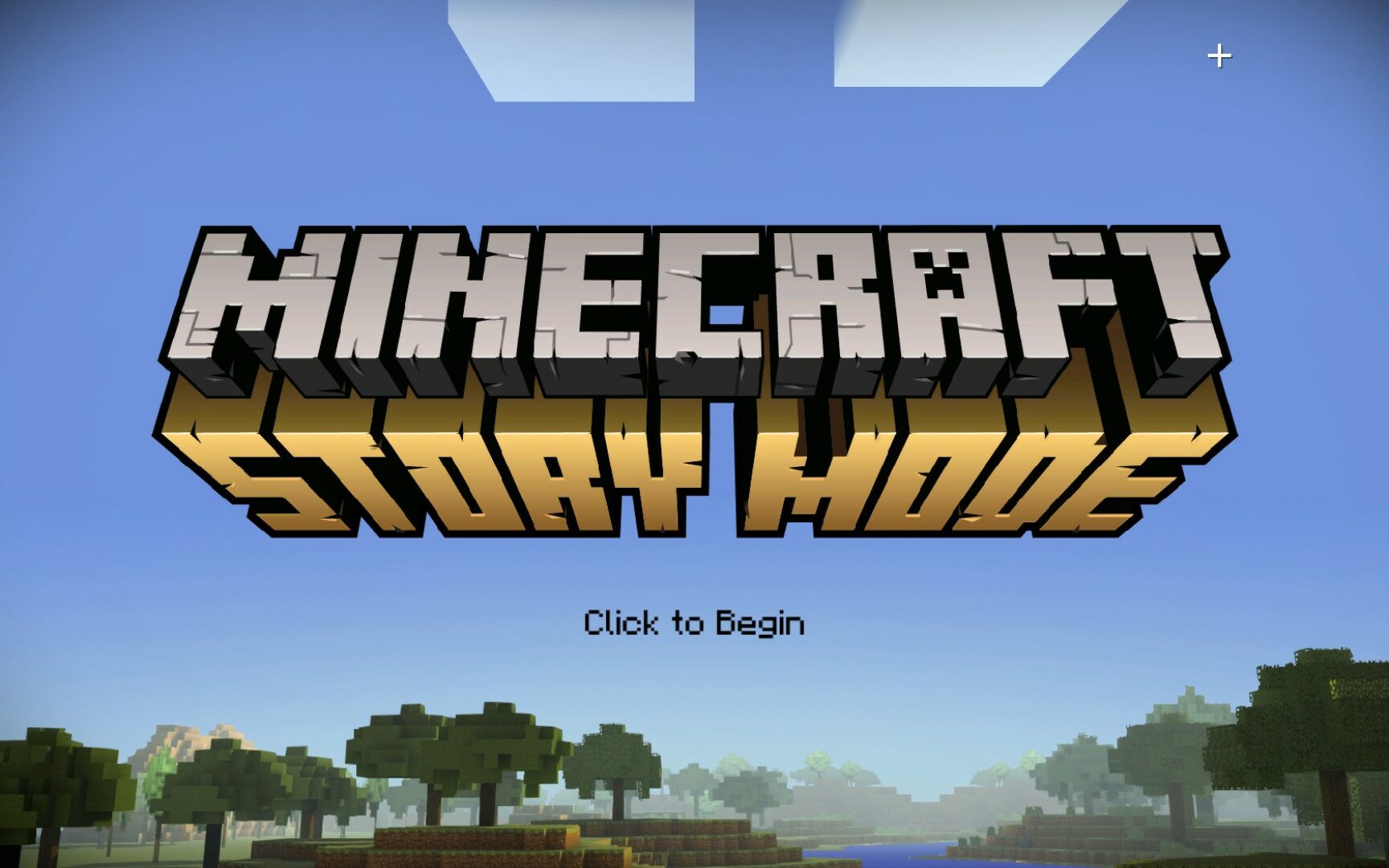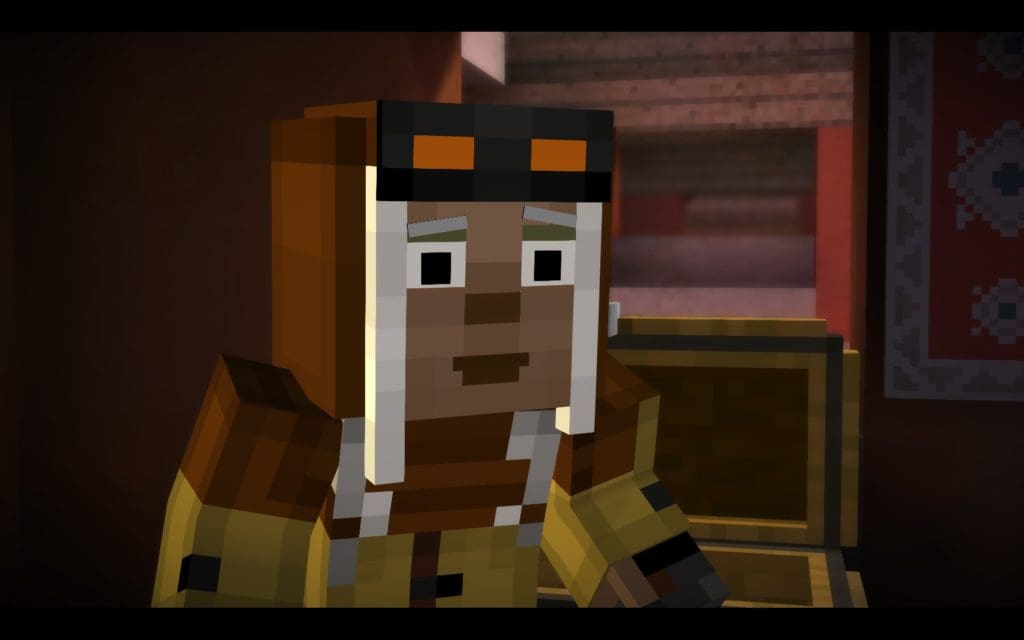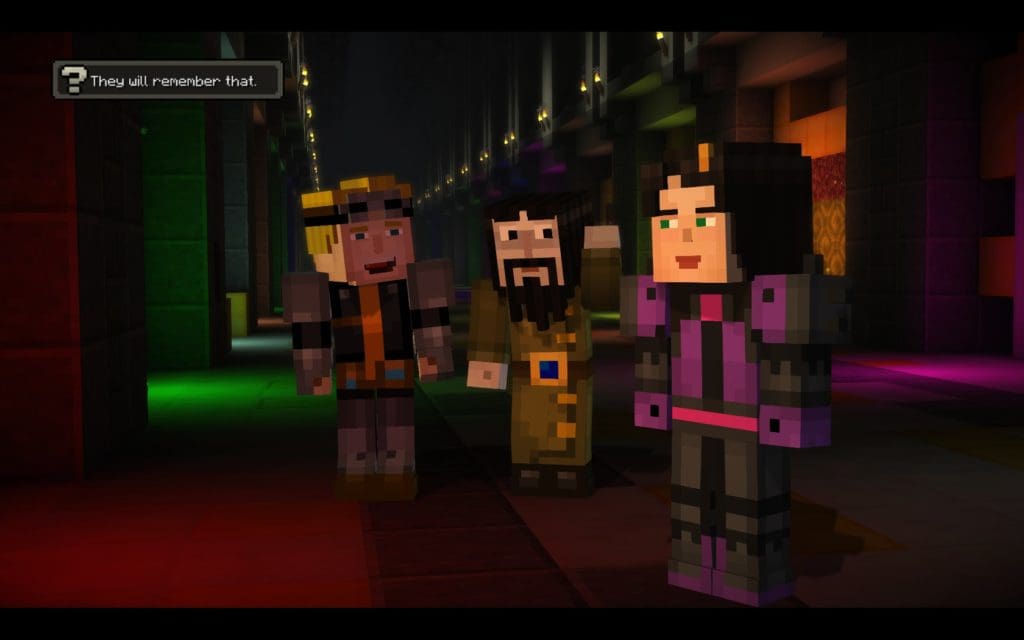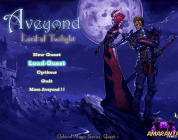Greetings Backloggers! Whoa boy, it has been a while since the last one of these, hasn’t it? Packing up the operation and moving to a new long-term location didn’t do good things for backlog progress. On the other hand, the best thing about digital game libraries, be they on Steam, GoG, Origin, Xbox Live, PlayStation Network, or Nintendo Store is that they’re phenomenally easy to move! The same can’t be said about my physical game library.
So! The last completed game in the library was Telltale Games’ Minecraft: Story Mode, Season One. In the typical Telltale mode, it’s a series of eight episodic adventures, each around two hours in length. As has become normal for the last few years, choices made in one episode influence some things in future episodes, though often to varying degrees. For Season One, the episodes are broken up into two quartets – Episodes 1-5 were originally released October 2015 – March 2016, with the final three episodes coming out in June, July, and September 2016.
For someone who’s passingly familiar with Minecraft and is a fan of Telltale Games’ adventure style, but is not a fan of Minecraft, these adventures presented an interesting question: can Telltale craft an interesting narrative, and good characters, in a game world with virtually no story, based on a franchise that I don’t like, and manage to make me care about them? To a surprising degree, the answer was “Yes!”
All of the stories center around your character and a group of friends. The first four focus on finding a way to defeat the Netherbeast, a massive three-headed demon thing that’s eating the world because someone overestimated his ability to control it. In Telltale’s usual style, each episode is a self-contained story, but also moves forward the overarching plot. Characters remember certain dialog choices, and a few do make a significant difference.

One of the nice things that Telltale does with their interface is to allow players to pick up episodes wherever they want.
The second set of four introduce a completely different setup, a portal world that transports the group between different Minecraft worlds. It’s a chance to play with some crazy worldbuilding, and do some different things that don’t even fit in the Minecraft universe as envisioned by Telltale. These episodes are a lot more self-contained that the first four, although they do come together in the end for an overall plot.
Telltale and Mojang invested in some solid voice acting talent for this game too. Patton Oswalt is the biggest star of the bunch, with Brian Posehn (The Sarah Silverman Program, Mission Hill), Ashley Johnson (The Last of Us, Tales from the Borderlands), Scott Porter (Friday Night Lights, X-Men), Martha Plimpton (The Goonies, Raising Hope), Dave Fennoy (The Walking Dead: A Telltale Games Series, Batman: Arkham Knight), Corey Feldman (The Goonies, Stand by Me), Billy West (Futurama, Adventure Time), and Paul Reubens (Tron: Uprising, Pee-Wee’s Playhouse) rounding out the major cast. Yvette Nicole Brown (Community, Pound Puppies) also deserves mention for a major character in Episode Seven.
The difficulty with episodic games like Telltale’s series is how to measure them up. They all follow a roughly similar formula of a 2-3 hour reasonably self-contained adventure, but in an episodic series, does each episode count as a game, or do all eight episodes constitute a single entry? I choose to take the approach that if the Steam entry is a single game, then the games are treated as a single entity. Obviously this approach cannot be extended to collections such as the King’s Quest Collection, but it’s the convention I’ve chosen to work with here, and I’m playing the “It’s my column, I’ll do what I want” card for how this is counted. The main point is to be consistent one way or the other.
While the entire eight episode is worth playing, there are some obvious highlights. Episode Two, Assembly Required, handles one of the most consequential decisions that the player makes, as they reconstitute The Order of the Stone to take on the Witherstorm. One choice gets blocks of TNT and explosions, the other gets semi-cerebral puzzles. Episode Seven, Access Denied, is another excellent chapter, featuring an excellent HAL 2000 parody executed in Redstone.
Dedicated Minecraft fans may love Episode Six, A Portal To Mystery, which is one of the most stand alone episodes. A murder mystery featuring some famous YouTube Minecraft players, individual reception largely depends on how much one enjoys these particular YouTubers. As someone who is not a Minecraft fan, it fell flat for me, but again, player’s mileage may vary heavily here.
Backlog Verdict: Worth playing. For Minecraft fans, this one is a no-brainer. For adventure game fans in general, and those who generally enjoy Telltale’s offerings, this remains worth playing. The writing is well executed, the voice acting is well done, and Telltale continues to show off why they are the current masters of episodic adventure content.
Previous Backlog Count: 1,199
Current Backlog Count: 1,218! This is what happens when I don’t complete a game for six months. And look, let’s be honest, at this point, it’s pretty likely that unless I win the Lottery and retire to a life of playing videogames sixty hours a week, the Backlog is never going to be ended. Between new game releases and freebies from various online game purveyors, I’m lucky if I can keep my number neutral in a given month. That doesn’t mean the end of The Burndown, just an acknowledgement that this is a column that will probably never end. Especially when it goes six months between publishes.
Backlog Burndown is a Marooners’ Rock feature published approximately whenever Aaron actually manages to finish a game. Read previous columns in the archives, and suggest future games to play in the comments!








